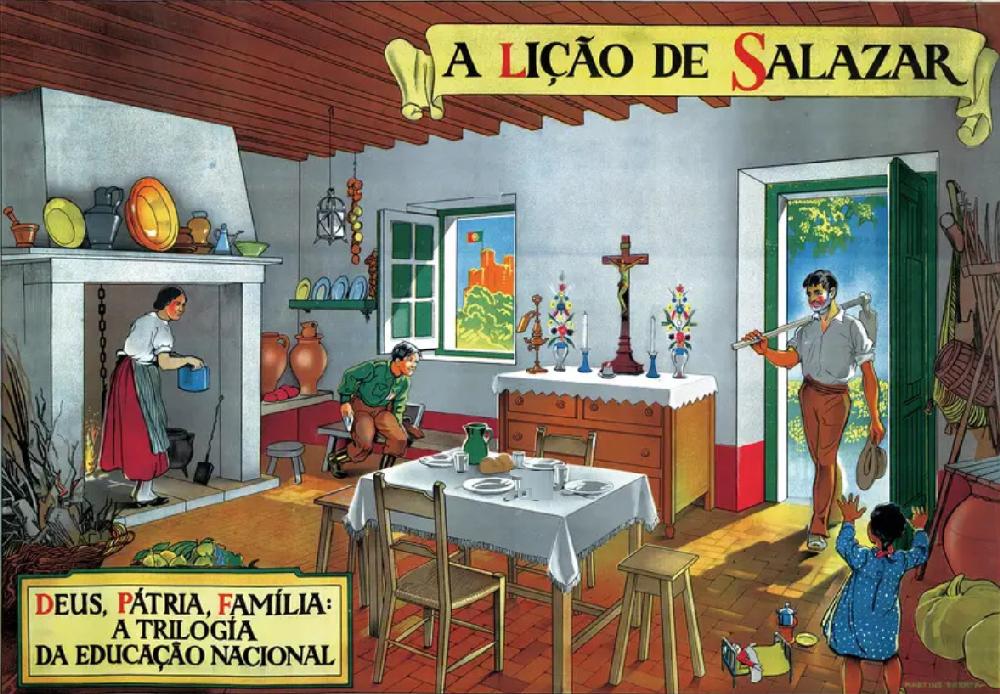
Figure 1.-- Here is a typical Portuguese Estado Novo propaganda poster with the slogan 'God, coutry, and family'. |

|
Dr. Antonio de Oliveira Salazar (1889-1968) ruled Portugal as a dictator with Fascist trappings. He considered becoming a priest as a young man. He attended a seminary. He then studied at the University of Coimbra. Salazar religious convictions led him to a faction became involved with a political faction desiring to implement the social principles enunciated by Pope Leo XIII. After receiving a doctorate, Salazar taught political economy at the University of Coimbra. He was elected a deputy (1921), but was appalled by parliamentary politics. After a military coup he was appointed Minister of Finance (1926). He helped put Portugal's chaotic finances on a form basis. This launched his political career. He was appointed premier by President (General) António de Fragoso Carmona (1932). He seized power as dictator with the approval of a new constitution. He proved to be the longest ruling non-monarchical ruler in Europe. He established a Fascist-like dictatorship, but it is probably not quite accurate to describe as a Fascist. Perhaps the deepest beliefs he held were religious. Once in power his policies were a kind of fusion of Italian-style corporate Fascism and Catholicism. He created what he called the The Novo Estado--the New State with a new constitution (1933). This was corporatist regime bearng some influence of Mussolini Corporate State. It emerged from the political instability of the First Portuguese Republic. It priottized conservative, nationalist, and authoritarian ideologies. There were traces of Fascism, but without the totlitarian featues of Italian Fascism anf German NAZIissm. It was at the core. Salazar's vision of a traditional Catholic society. The image on rge previous page gives an idea of a manafestations of the regime as does a 1940 school scene. The mismanagement of the 1920s contrasted with Salazar's competence in reorganizing the country's finances, even creating a budget surplus. He earned considerable support from the army, church, monarchists, upper middle classes, aristocrats and the right in general. Salazar's New State was in fact a return to 19th century authoritarianism. It was both anti-democratic and anti-parliamentarian. His economic principles are infused with the encyclicals of Pope Leo XIII and other Catholic theologians. Especially important were Rerum Novarum (1891) and Quadragesimo Anno (1931). Salazar's New State was based on traditional Roman Catholic principles--order, discipline, and authority. He rejected Marxist class struggle and rather saw a social structure based on harmony and common interests and values. This is not to say that Salazar did not have differences with the Church. He finally signed a Concordat with the Vatican (1940). This altered the anti-clerical policies approved during the Republic years. The Roman Catholic Church was given exclusive control over religious instruction in the public schools. Harmony sounds positive, but harmony was achieved by the Army and security services suppressed dissent. Salazar's economic policies benefited the wealthy oligarchy, but Portugal continued to be one of the poorest countries in Europe.
Navigate the Boys' Historical Clothing Web Site:
[Return to the Main Portuguese history page]
[Return to the Main European history country page]
[Introduction]
[Animals]
[Biographies]
[Chronology]
[Climatology]
[Clothing]
[Disease and Health]
[Economics]
[Geography]
[History]
[Human Nature]
[Law]
[Nationalism]
[Presidents]
[Religion]
[Royalty]
[Science]
[Social Class]
[Bibliographies]
[Contributions]
[FAQs]
[Glossaries]
[Images]
[Links]
[Registration]
[Tools]
[Children in History Home]
Navigate the Boys' Historical Clothing Polish pages:
[Portuguese choirs]
[Portuguese movies]
[Portuguese orphanages]
[Portuguese school uniforms]
[Portuguese sailor suits]
[Portuguese youth groups]
Navigate the Boys' Historical Clothing Web Site:
[Return to the Main Portuguese page]
[Australia]
[Canada]
[England]
[France]
[Germany]
[Ireland]
[Italy]
[New Zealand]
[Poland]
[Scotland]
[Spain]
[United States]
